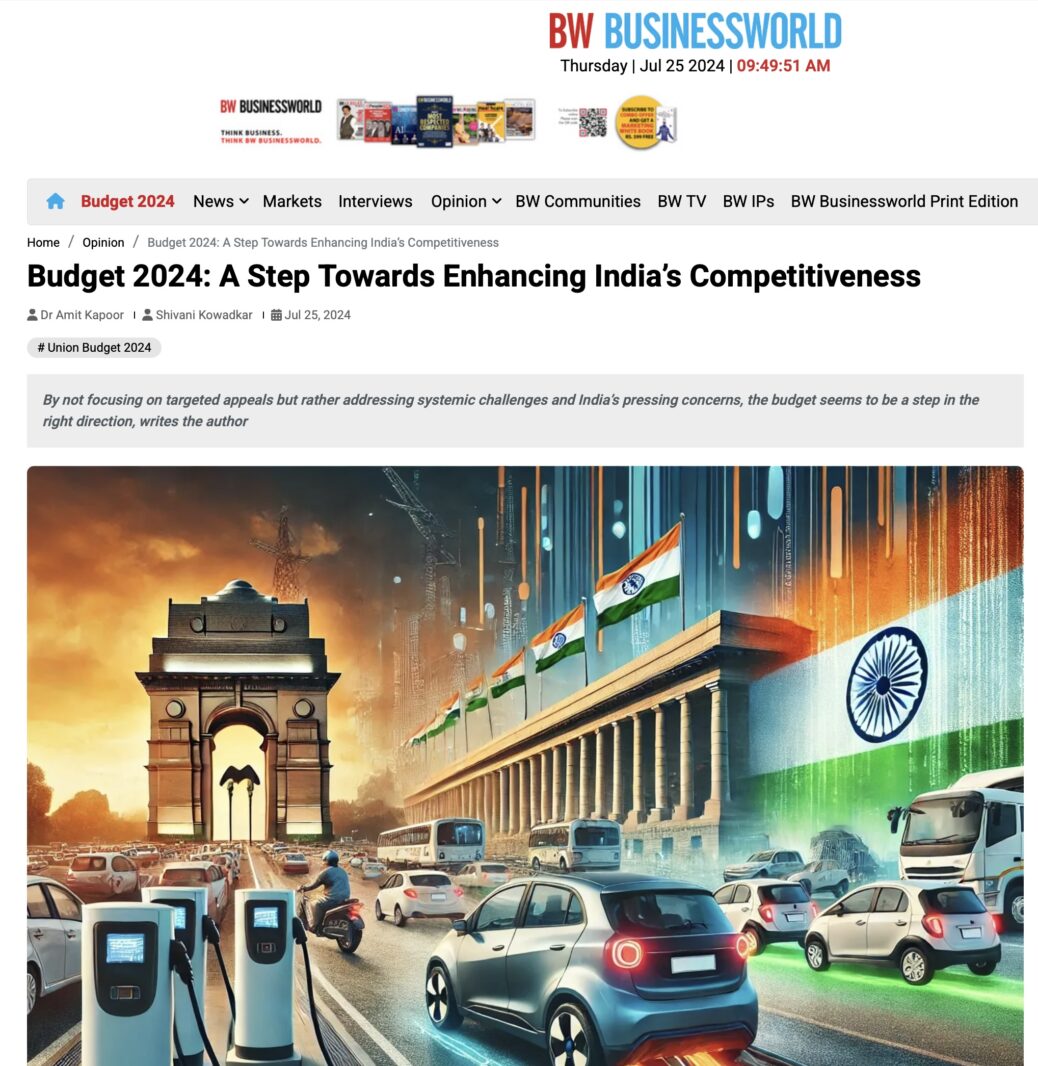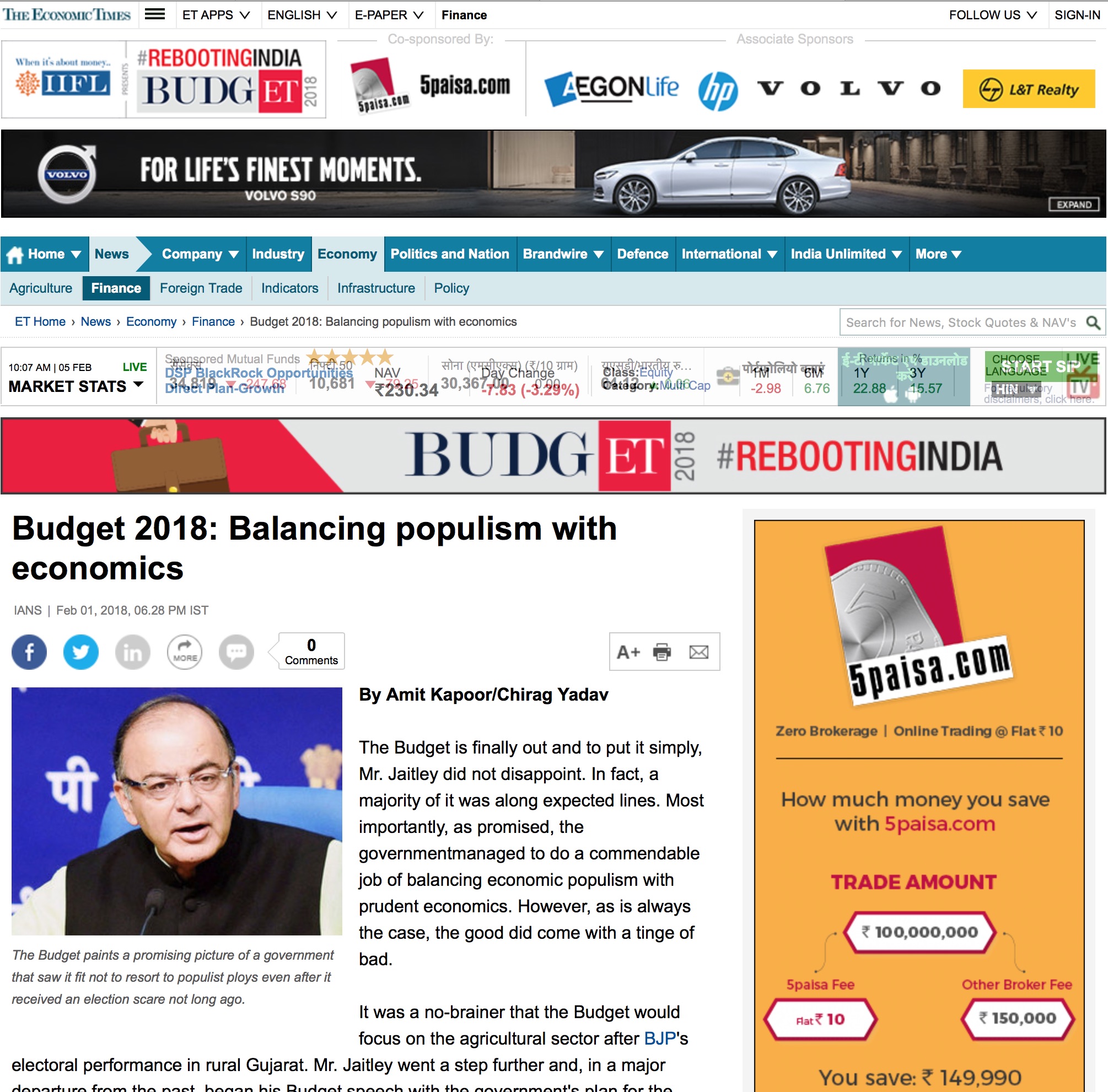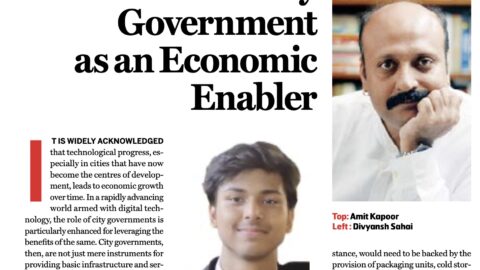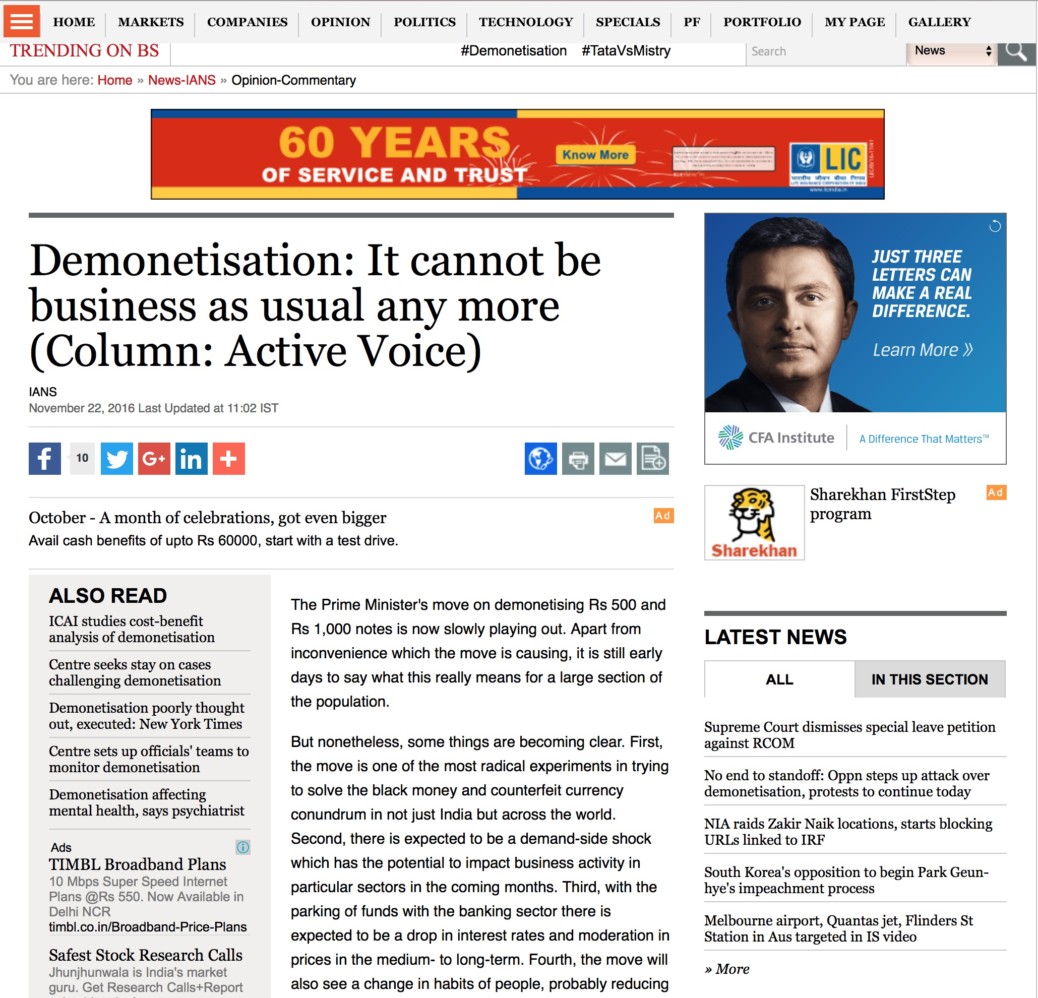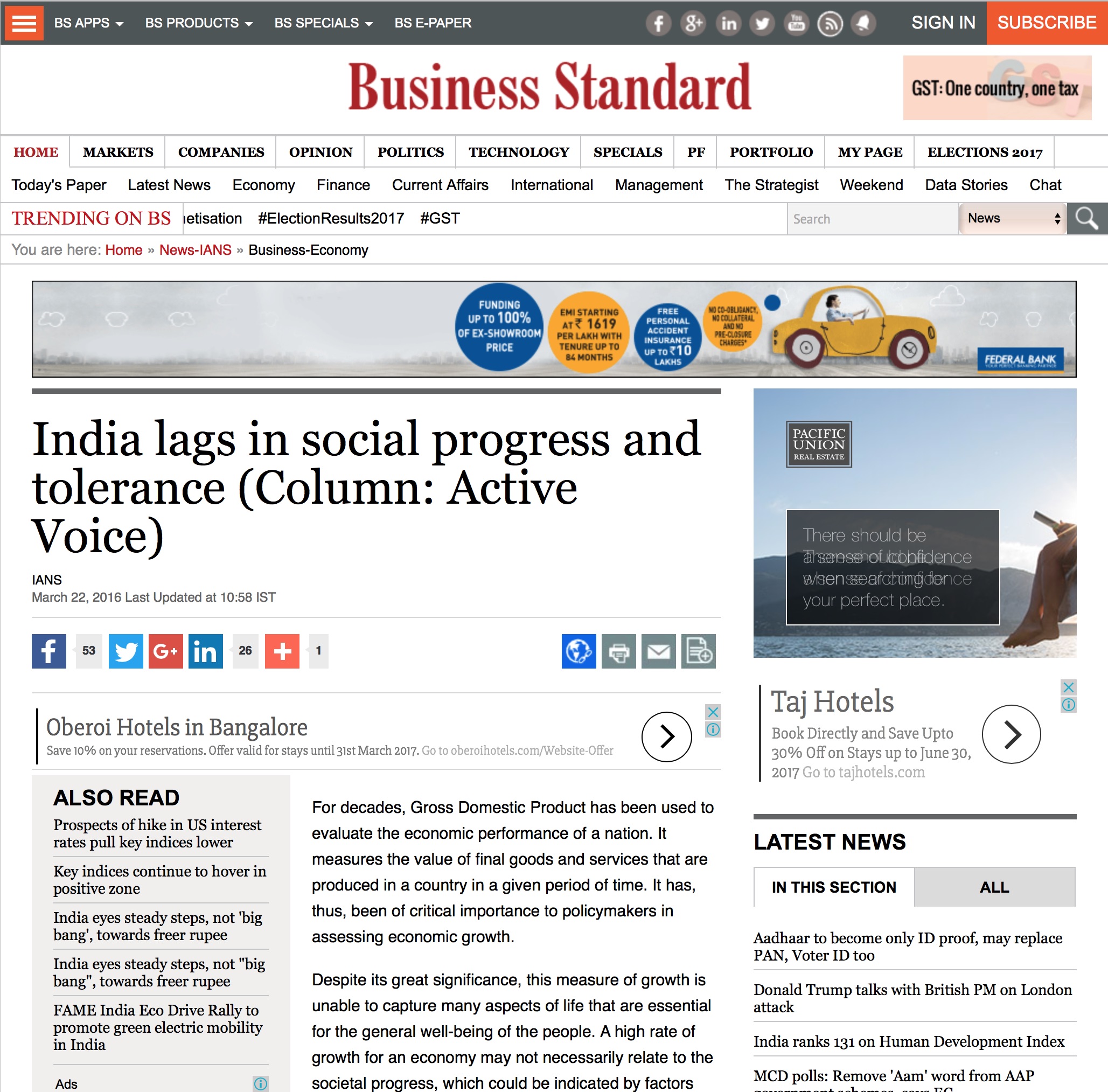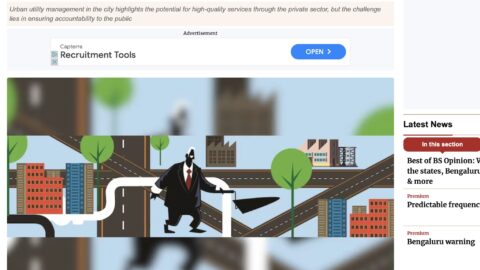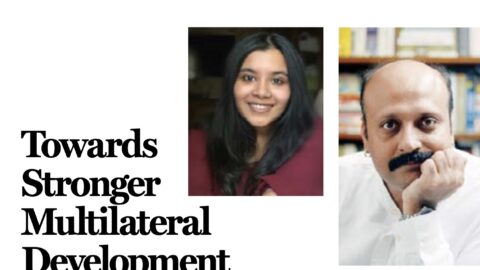By Amit Kapoor and Shivani Kowadker
In the lead up to the Union Budget presentation, news and policy circles are abuzz with discussions on expectations of various segments and industries from the Budget. While budget analyses often concentrate on the expectations of various segments, the Union Budget 2024 stands out by addressing critical challenges directly, placing them at the forefront of its agenda. The Indian economy is being perceived as a bright spot. The Economic Survey projects a real GDP growth of 6.5–7 per cent for India. India’s economic performance should be seen in the context of certain global developments. According to the International Monetary Fund’s (IMF) World Economic Outlook (WEO) from April 2024, the global economy grew by 3.2 percent in 2023, which is somewhat lower than the growth rate in 2022. Global inflationary pressures have lingered on the higher end, geopolitical tensions and changes in monetary policy in some countries have dampened trade and FDI flows to some extent. India’s Gross value added (GVA) registered an increase by 7.2 per cent in FY24 (at 2011-12 prices). Retain inflation witnessed a dip from 6.7 per cent in FY23 to 5.4 per cent in FY24. The country fared better on the Current Account Deficit (CAD) front, with an improvement from 2.0 per cent of GDP in FY23 to 0.7 per cent of the GDP during FY24. Beyond optimistic projections of a bright economic future, it was crucial for the budget to address real concerns, and the Union Budget 2024 has laid a clear emphasis on the same. It focuses on key challenges that India is faced with at the current critical juncture.
The Budget set out nine priority areas to provide ample opportunities for all viz., productivity and resilience in agriculture, employment and skilling, inclusive human resource development and social justice, manufacturing and services, urban development, energy security, infrastructure, innovation R&D, and next-generation reforms. India’s employment challenge is of colossal proportions. The Economic Survey 2023-24 highlights the need for an average of nearly 78.5 lakh jobs to be generated annually until 2030 in the non-farm sector to absorb the burgeoning workforce. India’s employment challenge is multifaceted, shaped by structural shifts due to AI and digitalization, the expanding gig economy, the rise of green jobs, and the commensurate transformation required in workforce skills. Low female labour force participation further adds to the challenge. In this context, the three schemes focusing on incentivizing employment for first time entrants, creating jobs manufacturing and supporting employers, come at an opportune moment. Moreover, emphasis was also laid on boosting female labour force participation by establishing working women hostels and creches. A lot has been said about skilling in recent years and the dire need to have an able workforce. The significance of skilling reflects in the announcement of a new centrally sponsored scheme aiming to skill 20 lakh youth a 5-year period and upgrade 1000 Industrial Training Institutes. Additionally, the Model Skill Loan Scheme set for a revision to offer loans up to 7.5 lakh and the provision of internship opportunities to about 1 crore youth show that enhancing employment as well as employability is the key priority. While the need to match skilling with emerging industry needs is indeed integral to employment growth, it is important to design targeted skill development programmes in a way that promotes greater participation in high-skilled categories.
Beyond employment, the Budget has placed a significant emphasis on Micro, Small and Medium Enterprises (MSMEs), recognizing their vital role in driving India’s economic growth and employment. The total employment reported by MSMEs on the Udyam Registration Portal from 2020 to 2024 is 20.39 crore, and the share of MSME Gross Value Added in all-India GDP stands at 30.1 percent in 2022-23. This segment accounted for about 35 percent share in all-India manufacturing output during the year FY22. There is no doubt that this segment holds the key to propel the economy’s competitiveness. Provisions including a credit guarantee scheme for facilitating term loans to MSMEs for purchase of machinery and equipment without requiring collateral or third-party guarantee, development of a new assessment model for credit, and an increased limit of Mudra loans under ‘Tarun’ category from 10 lakh to 20 lakh for borrowers who have successfully repaid previous loans, are some of the key developments in this arena. Over the years, there has been a clear emphasis on strengthening MSMES’ export capabilities. The percentage share of export of MSME related products in All India Exports has declined from 49.75 percent in 2019-20 to 45.79 percent in 2024-25 (upto May 2024). In this context, the plan to establish E-Commerce Export Hubs to foster enhanced participation of MSMEs and traditional artisans in international markets is a welcome move.
Yet another area of emphasis that stood out strongly is energy security. Fuelling various endeavours, literally and figuratively, calls for available, accessible, and affordable energy. To put it simply, energy security underpins economic development. It is estimated that over the next two decades, India is expected to contribute to about 25 percent of global energy demand growth. The country’s energy requirements are estimated to grow 2 to 2.5 times by 2047. On one hand, transitioning to greener and cleaner sources of energy, and on the other, meeting development needs and aspirations of an emerging economy, requires a fine balance to be struck. Both, the Economic Survey and the Union Budget, underscore the significance of balancing economic and employment growth, and environmental sustainability. What was particularly notable, is the aim to develop a climate finance taxonomy with the objective of increasing the availability of funds for climate adaptation and mitigation. An emphasis on both these aspects reflects the centrality of common but differentiated responsibilities and respective national capabilities to energy transition and tackling climate change.
The Budget outlines our goals and plans; the key focus now is on effectively implementing these strategies. By not focusing on targeted appeals but rather addressing systemic challenges and India’s pressing concerns, the budget seems to be a step in the right direction.
Amit Kapoor is honorary chairman at the Institute for Competitiveness and a lecturer at Stanford University. Shivani Kowadkar, Development Policy Lead at the Institute for Competitiveness, contributed to this article.
The article was published with Business World on July 25, 2024.

